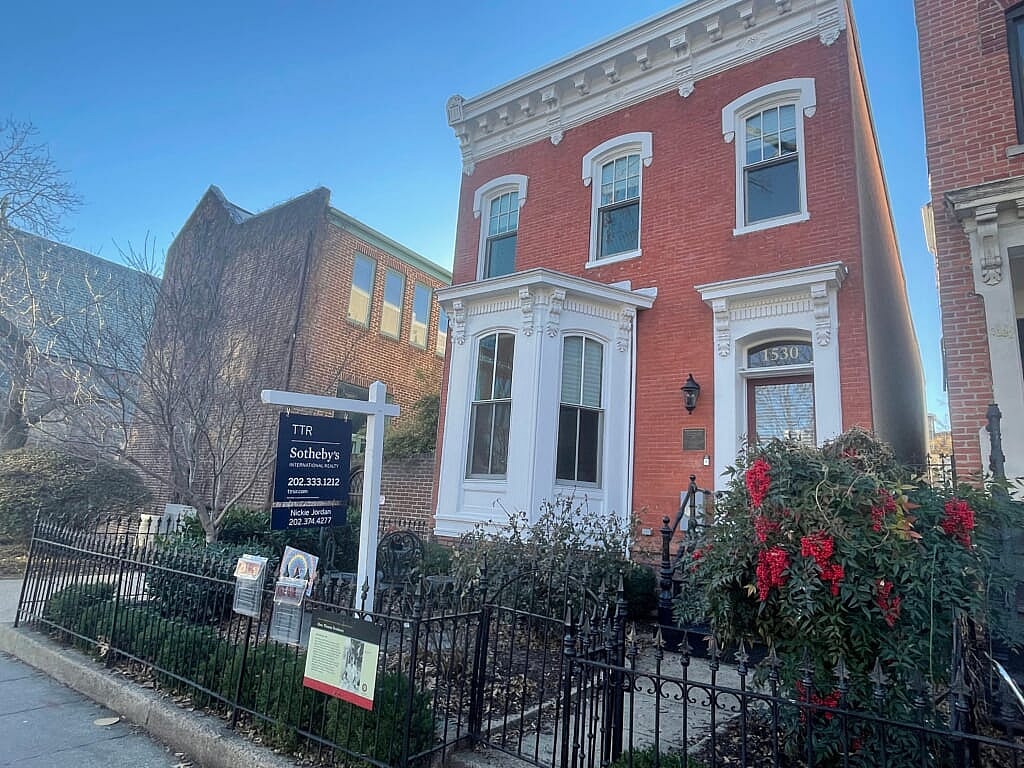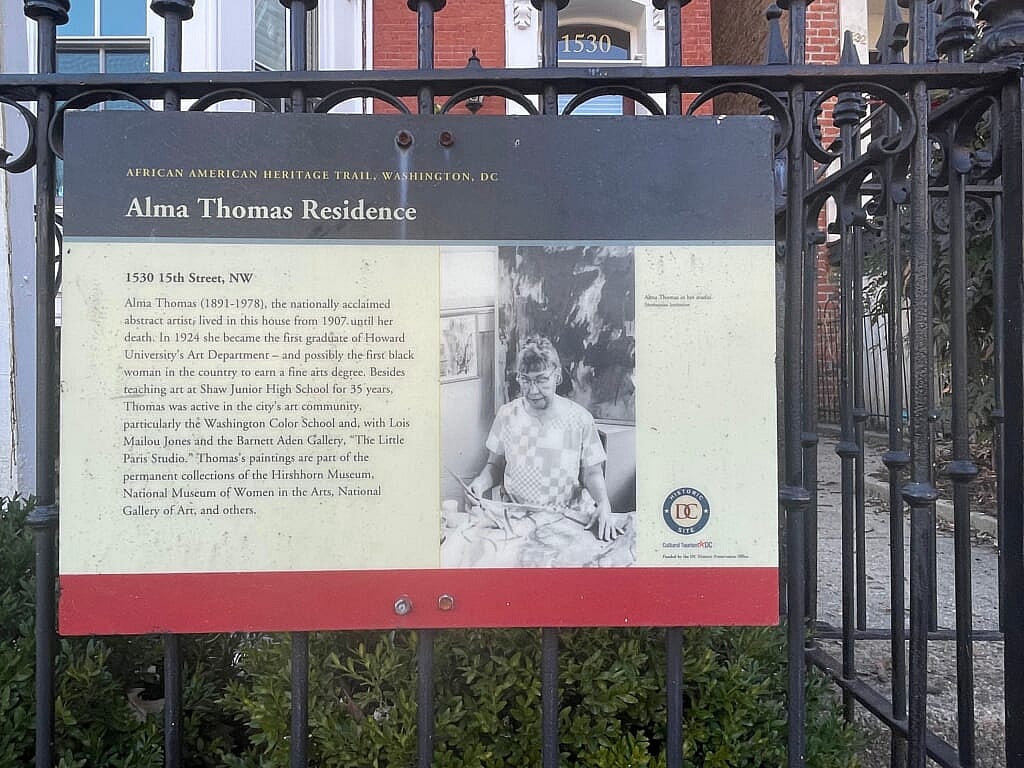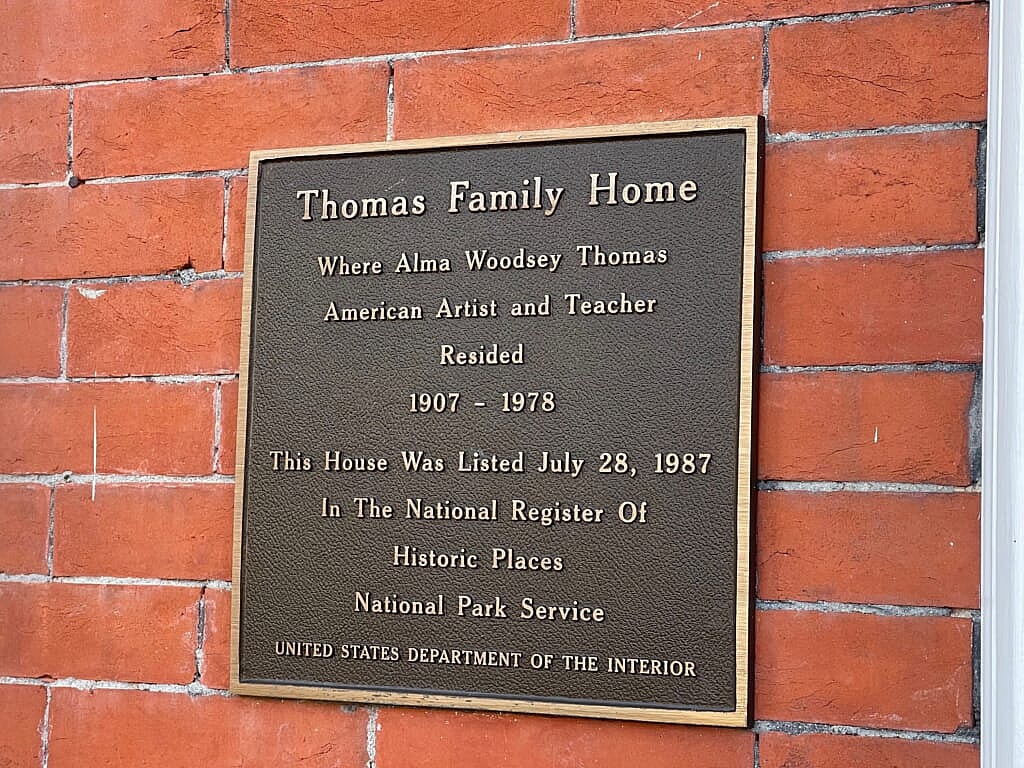Howard University’s first fine arts graduate, Alma Thomas, walked the streets of Washington, D.C. in the late 1890s. At the time, her residence and its surrounding neighborhood were inhabited by upper-middle-class Black Americans.
Today, the demographic landscape of the city looks drastically different as several neighborhoods are in the early stages of gentrification or have been completely redeveloped. Thomas’ home, which sits in the center of Logan Circle, is one of many to appreciate in value throughout the district’s transformation.
Along with this shift in socioeconomics, Thomas’ alma mater has stood firm in the heart of the rapidly changing Shaw neighborhood of Washington.

“She looked at her neighborhood and collaborated with the community in her neighborhood,” Renée Maurer, associate curator of the Alma W. Thomas: Everything Is Beautiful exhibit at the Phillips Collection, told theGrio.
Thomas’ parents purchased the home in 1907 and Thomas continued to live in the residence after their death until hers in 1978. Thomas’ sister J. Maurice took on ownership of the house until 2004 when she passed away. Thomas’ great-nephew then took possession of the property and sold it for $900,000 in 2013.
Since 2013, the house has more than doubled in value and is now on the market for $2.3 million.
Much of Thomas’ artwork was inspired by her life in Washington and experiences at Howard. According to art historians at Howard University, gentrification started to take place in Logan Circle during the 1950s and 1960s. Thomas used art to reach those in her community who were impacted by socioeconomic disparities.

“She really underneath understood our capacity to transform one circumstance, whether it was their living conditions, whether it was the crime that they were around, she wanted to offer them another pathway,” said Melanee Harvey, assistant professor of art history in the Chadwick A. Boseman College of Fine Arts at Howard University.
While the Black population in the district has been on a decline, that trend hasn’t been consistent throughout the decades since Thomas’ passing. In the 1970s, Washington’s Black population peaked at 70%. But in 2020, D.C. was the only area in the country to see a significant uptick in its white population.
During the pandemic, the city’s real estate market saw a boom that ramped up the rate of gentrification.

“You see people buying up property because the price at the moment is fairly low, but they’re anticipating gentrification will drive prices up,” explained Peter Tatian, senior fellow at the Urban Institute and research director for Urban–Greater DC. “And so they’re acquiring those properties, holding them or they may do some renovation on them, and then resell them for a profit.”
Tatian told theGrio that rising home prices, the racial makeup of the homebuyers and cash buyouts of properties are some key indications that gentrification is underway in an area. Visibly, new business could signal gentrification has occurred.
Just footsteps away from Saint Luke’s Episcopal Church, known for its wealthy Black congregation, Thomas’ house sits historically preserved on the outside with a newly remodeled and modernized interior. TheGrio was granted access to the property to experience the home of the critically acclaimed artist.
Upon arrival, newly renovated townhomes lined the street, signaling that newcomers had lay roots in the once predominately Black upper-middle-class enclave. The area, once known for its cozy residential community, now includes new trendy D.C. businesses like Milk Bar Bakery, VIDA Fitness Gym and Aura Spa among others.
To district natives, these businesses serve as examples of “New D.C.,” a city that is becoming unaffordable and harder to stay in by the day. Students at Howard have publicly pushed back on the cultural implications of gentrification that have greatly impacted The Mecca.
Before gentrification took hold, members of Howard’s faculty were able to purchase homes a couple blocks from Thomas’ house. Harvey told theGrio on 16th Street NW and Swann St NW, one of the earliest deans of Howard’s College of Dentistry was one of the first African Americans to own a residence on 16th Street.

But now single-family townhouses that have been converted into apartment units are evaporating the option to buy property in the vicinity.
“With the idea that Howard University faculty offered a certain level of socioeconomic consistency to both Shaw and that Logan Circle area, it seems like a major loss,” Harvey explained. “When we look at the construction of one-bedroom apartments, not even condos, completely taking away the possibility of buying power and also prohibiting a kind of long-term investment that the faculty can have with that community around Howard.”
In 2019, the internet exploded into debate when many in the Howard community pushed back on people walking their dogs through the campus to relieve themselves. As a result, gentrification and lost histories that come with redevelopment overall have been concerns at Howard.
“When we look at the changes that have happened to Shaw, Logan Circle, really, in the last 10 years, you know, I just wonder about the community’s awareness and commitment to making sure that this remains a pilgrimage site,” Harvey examined.
Howard faculty member Harvey wishes the university and Washington community had the ability to purchase the Alma Thomas House to turn into a museum.
“That would be so empowering not only to our students, but to young Black artists in Washington, D.C., be it at Duke Ellington School for the Arts or any of the educational institutions in the city,” Harvey added.
Have you subscribed to theGrio podcasts, Dear Culture or Acting Up? Download our newest episodes now!
TheGrio is now on Apple TV, Amazon Fire, and Roku. Download theGrio today!

